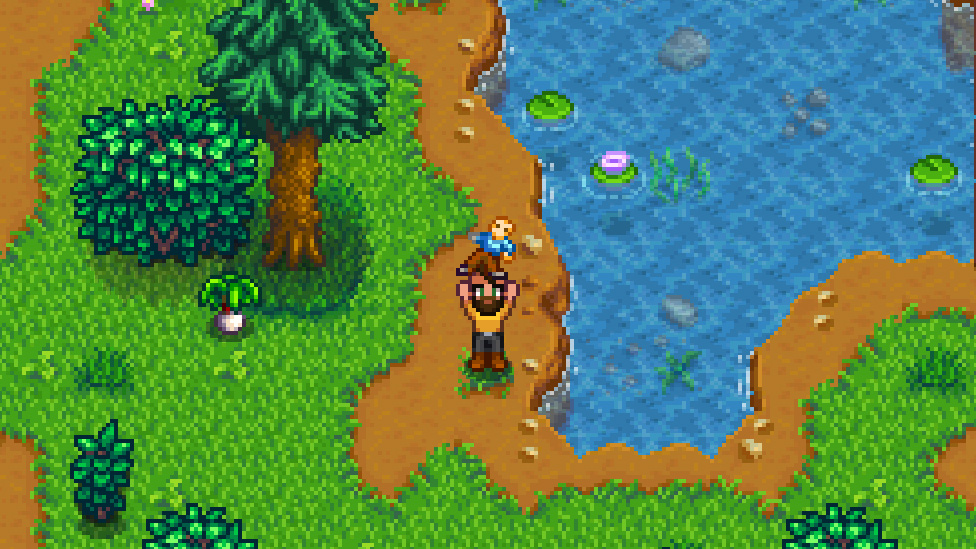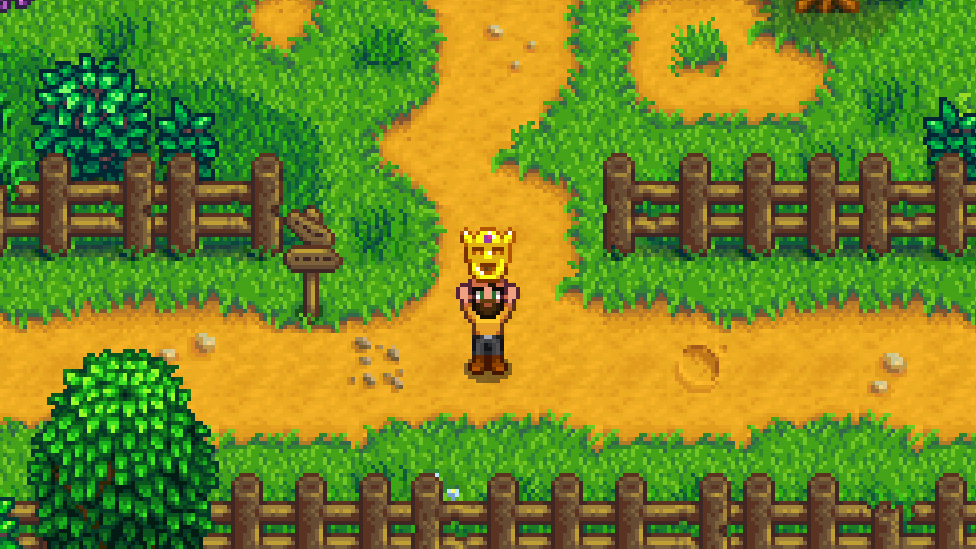Stardew Valley: All Artifact Locations
So in Stardew Valley, artifacts play a crucial role in completing the Museum collection, unlocking special rewards, and gaining valuable insights into the valley’s history. This comprehensive guide covers all artifact locations, how to find them, and tips for efficiently completing your Museum collection.

Introduction to Artifacts
Artifacts in Stardew Valley are unique items that players can discover through various activities such as digging, fishing, and mining. These items can be donated to the Museum, which is run by Gunther. Donating artifacts not only completes the Museum collection but also provides rewards and helps players unlock additional content. Collecting all artifacts is a challenging but rewarding endeavor that adds depth to the gameplay experience.
How to Find Artifacts
Artifacts can be found through several methods in Stardew Valley. Here’s a detailed breakdown of the main ways to discover these unique items:

List of All Artifacts and Their Locations
Here is a detailed list of all artifacts in Stardew Valley, their descriptions, and where you can find them:
Common Artifacts
Artifact Description Location
Arrowhead A prehistoric arrowhead used by ancient people. Digging spots in Pelican Town, Forest
Ancient Doll A creepy doll from a forgotten time. Digging spots, Mines, Fishing
Bone Flute A prehistoric wind instrument. Digging spots, Mines
Prehistoric Handaxe An ancient tool used for carving. Digging spots in Forest, Mountain
Rare Artifacts
Artifact Description Location
Dinosaur Egg Could this be real? Digging spots in Forest, Mountain, Fishing
Ancient Sword A blade from an ancient civilization. Digging spots, Mines
Golden Mask An old mask made of gold. Digging spots in the Desert
Strange Doll A doll that fills you with a strange feeling. Digging spots, Mines
Museum Layout and Display
Organizing the Museum display is an important aspect of donating artifacts. Here are some tips for arranging your artifacts effectively:
Categorize by Type: Group similar artifacts together, such as prehistoric items, tools, and dolls. This makes the display visually appealing and easier to navigate.
Highlight Rare Items: Place rare and valuable artifacts in prominent positions to draw attention. Use the central tables and the back wall for these items.
Fill All Slots: Aim to fill every slot in the Museum. This not only completes the collection but also unlocks special rewards and achievements.

Table of Artifact Locations and Methods
Tips for Efficient Artifact Collection
To efficiently collect artifacts and complete your Museum collection, consider the following strategies:
Daily Routine: Incorporate artifact hunting into your daily routine. Check for artifact spots every day and make a habit of visiting the mines and fishing in different locations.
Seasonal Focus: Some artifacts are more likely to appear in certain seasons. Focus your efforts on these times to increase your chances of finding specific items.
Utilize Geodes: Regularly visit the mines to collect geodes, and have them processed at Clint’s Blacksmith Shop. Geodes can contain a variety of artifacts.
Fishing Variety: Fish in different locations and use different tackle to maximize your chances of catching artifacts.
For more detailed guides and tips, you can check out additional resources

Make Your Own Stardew Valley Server
Introduction to Artifacts
Artifacts in Stardew Valley are unique items that players can discover through various activities such as digging, fishing, and mining. These items can be donated to the Museum, which is run by Gunther. Donating artifacts not only completes the Museum collection but also provides rewards and helps players unlock additional content. Collecting all artifacts is a challenging but rewarding endeavor that adds depth to the gameplay experience.How to Find Artifacts
Artifacts can be found through several methods in Stardew Valley. Here’s a detailed breakdown of the main ways to discover these unique items:- Digging and Tilling Soil One of the primary methods to find artifacts is by digging and tilling soil spots, often marked by worms (or artifact spots) sticking out of the ground.
- Mining and Breaking Rocks Mining is another effective way to find artifacts, especially in the deeper levels of the mines.
- Fishing and Crab Pots Fishing and using crab pots can yield artifacts, especially when fishing in specific locations or with certain fishing tackle.
- Panning for Gold Panning for gold in the rivers can sometimes yield artifacts. This method is unlocked after completing the Fish Tank bundles in the Community Center, which rewards you with a Copper Pan.
Locations: Artifact spots can be found throughout Pelican Town, including the mountains, the beach, Cindersap Forest, and the desert.
Tools Needed: Use a hoe to dig up these spots. Pay attention to the different seasons, as certain artifacts are more likely to appear during specific times of the year.
Mines: Explore the mines and break rocks to find geodes, which can be processed at Clint’s Blacksmith Shop to reveal artifacts.
Skull Cavern: The Skull Cavern in the Calico Desert offers a higher chance of finding rare artifacts within geodes and treasure chests.
Fishing: Cast your line in rivers, lakes, and the ocean to potentially catch artifacts.
Crab Pots: Place crab pots in bodies of water and check them daily. Crab pots can catch trash items that may include artifacts.
Panning Spots: Look for shimmering spots in rivers and use the Copper Pan to collect items, including artifacts.

List of All Artifacts and Their Locations
Here is a detailed list of all artifacts in Stardew Valley, their descriptions, and where you can find them:Common Artifacts
Artifact Description Location
Arrowhead A prehistoric arrowhead used by ancient people. Digging spots in Pelican Town, Forest
Ancient Doll A creepy doll from a forgotten time. Digging spots, Mines, Fishing
Bone Flute A prehistoric wind instrument. Digging spots, Mines
Prehistoric Handaxe An ancient tool used for carving. Digging spots in Forest, Mountain
Rare Artifacts
Artifact Description Location
Dinosaur Egg Could this be real? Digging spots in Forest, Mountain, Fishing
Ancient Sword A blade from an ancient civilization. Digging spots, Mines
Golden Mask An old mask made of gold. Digging spots in the Desert
Strange Doll A doll that fills you with a strange feeling. Digging spots, Mines
Museum Layout and Display
Organizing the Museum display is an important aspect of donating artifacts. Here are some tips for arranging your artifacts effectively:
Categorize by Type: Group similar artifacts together, such as prehistoric items, tools, and dolls. This makes the display visually appealing and easier to navigate.
Highlight Rare Items: Place rare and valuable artifacts in prominent positions to draw attention. Use the central tables and the back wall for these items.
Fill All Slots: Aim to fill every slot in the Museum. This not only completes the collection but also unlocks special rewards and achievements.

Table of Artifact Locations and Methods
| Artifact | Location | Method |
|---|---|---|
| Arrowhead Ancient Doll Bone Flute Dinosaur Egg Golden Mask Prehistoric Handaxe Strange Doll | Pelican Town, Forest Pelican Town, Mines, Fishing Forest, Mines Digging, Mining Forest, Mountain, Fishing Desert Digging Forest, Mountain Pelican Town, Mines | Digging Digging, Mining, Fishing Digging, Mining Digging, Fishing Digging Digging Digging, Mining |
Tips for Efficient Artifact Collection
To efficiently collect artifacts and complete your Museum collection, consider the following strategies:Daily Routine: Incorporate artifact hunting into your daily routine. Check for artifact spots every day and make a habit of visiting the mines and fishing in different locations.
Seasonal Focus: Some artifacts are more likely to appear in certain seasons. Focus your efforts on these times to increase your chances of finding specific items.
Utilize Geodes: Regularly visit the mines to collect geodes, and have them processed at Clint’s Blacksmith Shop. Geodes can contain a variety of artifacts.
Fishing Variety: Fish in different locations and use different tackle to maximize your chances of catching artifacts.
FAQ
Where can you find the Rusty Key in Stardew Valley?
The Rusty Key is obtained by donating 60 items to the Museum. Gunther will visit your farmhouse and give you the key.
What artifacts can you find in the desert?
In the desert, you can find artifacts such as the Golden Mask and Golden Relic by digging at artifact spots.
How do you increase your chances of finding artifacts?
Increase your chances by regularly checking artifact spots, mining geodes, fishing, and panning for gold. Incorporate these activities into your daily routine.
What is the significance of the Strange Doll in Stardew Valley?
The Strange Doll is a rare artifact that fills you with a strange feeling. It can be found by digging or mining and is
one of the more unique items to add to your Museum collection.
Conclusion
Collecting artifacts in Stardew Valley is a rewarding endeavor that enhances your gameplay experience and contributes to completing the Museum collection. By following this comprehensive guide, you can efficiently locate and donate all artifacts, unlock special rewards, and enjoy the rich history and mystery of Stardew Valley. Use the tips and strategies provided to maximize your artifact hunting efforts and create an impressive Museum display that showcases your dedication and achievements.For more detailed guides and tips, you can check out additional resources
Make Your Own Stardew Valley Server
Copyright 2019-2025 © ScalaCube - All Rights Reserved.